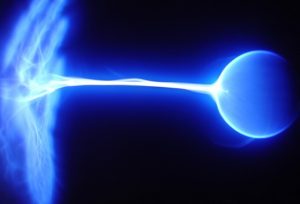Those experiencing facet joint pain know how debilitating it can be. Even simple tasks are usually carried out with extreme pain. Perhaps you are currently in this situation.
We know how unnerving this condition can be. Fortunately, many have found long-term relief through a therapeutic procedure called radiofrequency ablation (RFA).
Schedule an appointment with one of our highly trained specialists at Cayman Neurology today to learn more about this procedure. We are conveniently located in the Cayman Islands and look forward to assisting you!

Specialties
Neurology
Pain Management
Diagnostic Tests
Therapeutic Procedures
Radiofrequency ablation (RFA) is a minimally invasive procedure used to treat pain in your facet joint. This procedure uses heat to destroy the nerve endings that send pain signals to the brain, providing lasting relief for those experiencing chronic pain.
The purpose of radiofrequency ablation is to provide relief from pain that comes from your joints and contributes to pain in your neck, lower back, and sacroiliac joints.
Your facet joints are located along the sides of your vertebrae. As you age, the cushion between the vertebrae begins to degenerate. This leaves your spine susceptible to friction, and places added pressure and stress on your joints, which results in pain.
You have specific nerves that branch off your spinal cord and pass through your facet joint. RFA heats and burns the passageway that transmits the pain signals from the nerves (medial branch nerves) in the back to the brain. Once completed, your brain will be unable to receive the signals that notify it to feel the sensation of pain.
The following conditions can be treated by RFA:
You may make a good candidate for radiofrequency ablation if you have:
Radiofrequency ablation is performed on an outpatient basis and under local anesthesia. Below are the general steps of how this procedure is carried out.
During your procedure:
After your procedure, you will be taken into a recovery area to be monitored. While the time spent in recovery will vary from person to person, the average time spent there is between one and three hours. Additionally, you may be able to resume normal activity after one or two days.
There are many advantages to having a radiofrequency ablation procedure, including:
Radiofrequency facet joint ablations are generally safe and effective. These procedures have a low risk of complication because open surgery is not used.
However, while rare, there are some risks associated with the procedure. These risks include:
The results of radiofrequency facet joint ablations vary from person to person, but most people experience a significant reduction in pain. For some, pain relief can last from six months to 12 months. For others, the relief lasts a few years. Still, there are those who may only experience a limited amount of pain relief.
A radiofrequency ablation procedure can be repeated multiple times if needed. Please note that the treated nerve can regrow. If this is the case in your situation, it usually occurs between 6 to 12 months after your procedure.
There are several differences between RFA and facet joint injections. For example, RFA provides longer-lasting relief than a facet joint injection.
Additionally, RFA stops pain signals but doesn’t reduce inflammation, as is the case with a joint injection.
Dealing with pain can not only take a toll on you physically but also emotionally. Let us provide the treatment that you have been searching for!
Cayman Neurology is conveniently located in the Cayman Islands. Schedule an appointment with us today!
Copyright © 2024 Cayman Neurologist. All Rights Reserved.